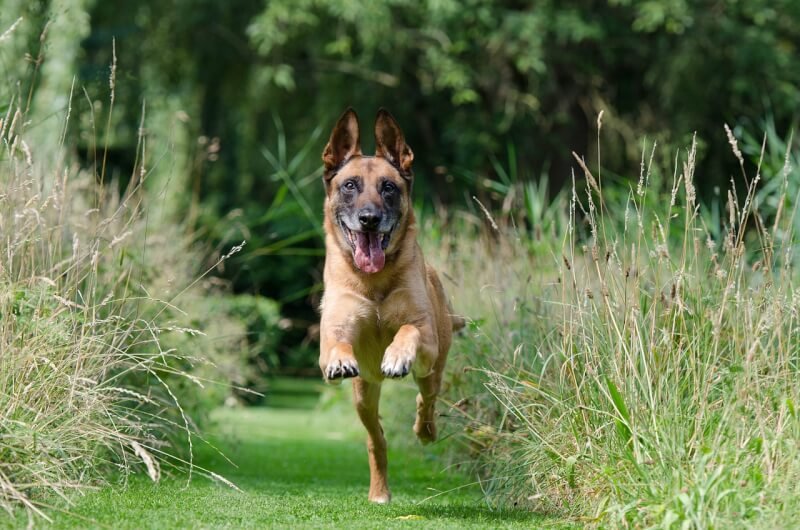In the realm of canine education and behavior, there is a haven where pooches and owners alike find solace, guidance, and transformation. Enter Dog Eared Training and Behavior—a place where unruly habits are gently tamed, fears are conquered, and the sacred bond between human and four-legged friend is fortified. With expert trainers who possess an unwavering passion for tail-wagging success stories, Dog Eared Training and Behavior offers a personalized approach that honors each dog’s unique needs and personality. Whether you’re hoping to address obedience issues, delve into tricks and agility training, or simply enhance your furry companion’s overall well-being, this establishment is undoubtedly the key to unlocking your dog’s fullest potential.

Understanding Dog Eared Training And Behavior
Definition of Dog Eared Training And Behavior
Dog Eared Training And Behavior refers to the specific techniques and principles used to train and address behavioral issues in dogs. This approach emphasizes a positive and rewards-based training method that takes into account the individual needs and behaviors of each dog. The term “Dog Eared” emphasizes the importance of understanding and tailoring training methods to suit the unique characteristics and personality of each dog.
Ready for Cat Trivia?
Test your knowledge about cats!

Importance of Dog Eared Training And Behavior
Dog Eared Training And Behavior is crucial for ensuring the well-being and happiness of both dogs and their owners. By understanding and addressing behavioral issues, owners can strengthen their bond with their pets while also providing them with a structured and fulfilling life. Effective training techniques help prevent and correct unwanted behaviors, creating a harmonious living environment for dogs and their families.
Common Training Issues in Dogs with Dog Eared Behavior
Leash Pulling
Leash pulling is a common issue that many dog owners face during walks. It can make walks unpleasant and can also be dangerous if the dog lunges towards distractions. With Dog Eared Training, the focus is on teaching the dog loose leash walking through positive reinforcement, rewarding the dog for walking by their owner’s side without pulling. Techniques such as treats, clickers, and verbal cues can be used to reinforce the desired behavior.
Jumping on People
Jumping on people is a behavior that can be both annoying and potentially harmful, especially if the dog is large or strong. Dog Eared Training addresses this issue by teaching the dog appropriate greeting behaviors, such as sitting or a controlled approach. By rewarding the dog for staying calm and not jumping, owners can help their dogs understand what is expected of them during greetings.
Barking and Howling
Excessive barking and howling can be a nuisance and can also disturb neighbors. Dog Eared Training approaches this issue by understanding the root cause of the barking and addressing it through positive reinforcement and redirection. For example, if the dog barks out of boredom, providing mental stimulation or interactive toys can help redirect their energy and reduce barking.
Chewing and Destroying
Chewing and destroying objects is a natural behavior for dogs, but it can become problematic when they target furniture, shoes, or other valuable items. Dog Eared Training focuses on providing appropriate outlets for chewing, such as chew toys or bones, and redirecting the dog’s attention towards those items. Positive reinforcement is used to reward the dog for chewing on the designated items instead of destructive ones.
Separation Anxiety
Separation anxiety is a common issue in dogs and can manifest through excessive whining, barking, or destructive behaviors when left alone. Dog Eared Training addresses separation anxiety by gradually desensitizing the dog to being left alone and teaching them that being alone can be positive through positive reinforcement techniques. Creating a calm and secure environment for the dog and gradually increasing alone time can help reduce separation anxiety.
Methods and Techniques for Dog Eared Training
Positive Reinforcement
Positive reinforcement is a central pillar of Dog Eared Training. This technique involves rewarding desired behaviors with treats, praise, or play, thereby reinforcing those behaviors. Positive reinforcement helps dogs associate good behaviors with positive outcomes, making them more likely to repeat those behaviors in the future. This method fosters a positive and trusting relationship between the dog and owner.
Clicker Training
Clicker training is a popular technique used in Dog Eared Training. It involves using a handheld clicker to mark the desired behavior, followed by a reward. The clicker sound serves as a clear and consistent signal to the dog that they have performed the correct behavior and will be rewarded. Clicker training helps dogs understand the exact moment they did something right, making the training process more effective and efficient.
Behavioral Conditioning
Behavioral conditioning is a method used in Dog Eared Training to modify undesirable behaviors and replace them with desired ones. This technique focuses on rewarding alternative behaviors that are incompatible with the unwanted behavior. For example, if a dog jumps on guests, the owner can reward the dog for sitting calmly instead. Over time, the dog learns that sitting calmly is more rewarding and will engage in that behavior instead of jumping.
Crate Training
Crate training is a valuable tool in Dog Eared Training, particularly for housebreaking and providing a safe space for the dog. The crate serves as a den-like area where the dog can feel secure and relaxed. When properly introduced and used, the crate becomes a positive association for the dog, teaching them bladder control and providing a place of refuge when needed.
Socialization
Socialization is a vital aspect of Dog Eared Training, especially during a dog’s early development. It involves exposing the dog to various environments, people, animals, and situations to ensure they are comfortable and well-adjusted. Positive experiences during socialization build confidence and create a well-rounded dog that can handle different situations without fear or aggression.
Understanding Dog Behavior with Dog Eared Training
Canine Body Language
Understanding canine body language is essential for effective Dog Eared Training. Dogs communicate through subtle body cues, such as ear position, tail wagging, and posture. By learning to interpret these signals, owners can gauge their dog’s emotional state and respond accordingly. This understanding allows for better communication and the ability to address any potential behavioral issues.
Interpreting Different Dog Eared Behaviors
Different behaviors displayed by dogs can indicate various emotions and needs. For example, a dog that is wagging their tail while relaxed and loose can be exhibiting happiness, while a dog with a tucked tail and lowered body posture may be showing fear or anxiety. By observing and interpreting these behaviors, owners can identify potential sources of stress or discomfort and adjust their training approach accordingly.

Creating a Training Plan for Dog Eared Behavior
Assessing Individual Needs
Each dog is unique, and their training plan should be tailored to their specific needs. Assessing a dog’s breed, age, temperament, and any existing behavioral issues is key to creating an effective training plan. By understanding the dog’s individual characteristics, owners can determine the best techniques to use and areas that require focused attention.
Setting Goals
Setting clear and achievable goals is essential for Dog Eared Training. Whether it’s teaching a basic command or addressing a specific behavior issue, having defined goals helps guide the training process and track progress. Goals should be specific, measurable, attainable, relevant, and time-bound (SMART) to provide a clear direction and ensure success.
Establishing Consistency
Consistency is crucial in Dog Eared Training. Dogs thrive on routine and clear expectations. Establishing consistent rules and boundaries, using consistent commands and signals, and providing consistent reinforcement helps dogs understand what is expected of them. Consistency also avoids confusion and ensures that training methods are effectively understood and retained by the dog.
Training Tools and Equipment for Dog Eared Behavior
Leashes and Collars
Leashes and collars are essential tools for Dog Eared Training, particularly for leash walking and control. Choosing the right leash and collar depends on the size, breed, and specific needs of the dog. Properly fitted and comfortable equipment improves communication between the dog and owner, making training sessions safer and more effective.
Clickers
Clickers are handheld devices used in clicker training to mark desired behaviors. They provide a distinct sound that can be easily associated with rewards, helping dogs understand when they have performed correctly. Clickers are lightweight, portable, and easy to use, making them a popular tool in Dog Eared Training.
Treats and Rewards
Treats and rewards are powerful tools in Dog Eared Training. High-value treats, such as small pieces of meat or commercial dog treats, motivate dogs to engage in desired behaviors. Rewards can also include verbal praise, petting, or playtime, depending on the preferences of the dog. Choosing the right treats and rewards that are enticing to the individual dog helps reinforce positive behavior.
Toys and Enrichment Devices
Toys and enrichment devices are important for mental stimulation and addressing behavioral issues related to boredom or destructiveness. Interactive toys, puzzle feeders, and chew toys provide dogs with entertainment and mental exercise. Utilizing toys and enrichment devices as part of Dog Eared Training helps redirect a dog’s energy towards appropriate outlets and prevents potential behavior problems.

Addressing Specific Behavior Issues with Dog Eared Training
Aggression
Addressing aggression requires specialized Dog Eared Training techniques. It is essential to understand the underlying cause and triggers of aggression in order to create an effective training plan. Techniques such as counter-conditioning and desensitization may be used to reshape the dog’s response to specific triggers, while ensuring safety measures are in place. Consulting with a professional dog trainer or behaviorist is often necessary for addressing aggression.
Fear and Anxiety
Fear and anxiety can greatly impact a dog’s well-being and behavior. Dog Eared Training focuses on creating a safe and positive environment for the fearful dog, gradually exposing them to their fears through desensitization and counter-conditioning techniques. By using positive reinforcement and carefully managing the dog’s environment, owners can help their dogs overcome fear and anxiety and build confidence.
Excessive Barking
Excessive barking can be addressed through Dog Eared Training by identifying the cause of barking and implementing appropriate techniques. For example, teaching the dog a “quiet” command and rewarding them for calm behavior can help reduce barking. Creating an enriching environment, providing mental stimulation, and addressing any underlying anxiety or boredom can also contribute to reducing excessive barking.
Understanding the Importance of Positive Reinforcement
Definition and Principles
Positive reinforcement is a training method that focuses on rewarding desired behaviors rather than punishing undesired ones. The principles of positive reinforcement involve using rewards, such as treats, praise, or play, to strengthen and encourage behaviors that are desirable. By associating these rewards with specific actions, dogs learn to repeat those behaviors in order to receive positive outcomes.
Benefits of Positive Reinforcement
Positive reinforcement has numerous benefits in Dog Eared Training. It creates a positive and trusting relationship between the dog and owner, as well as fosters a willingness to learn and cooperate. By using rewards, dogs are motivated and eager to engage in training sessions. Positive reinforcement also promotes mental stimulation, confidence, and a sense of accomplishment in dogs.

Dog Eared Training for Puppies
Potty Training
Potty training is an essential aspect of Dog Eared Training for puppies. By establishing a routine for bathroom breaks, rewarding successful elimination, and providing adequate opportunities for the puppy to relieve themselves in designated areas, owners can help puppies develop good bathroom habits. Consistency, positive reinforcement, and patience are key in successfully potty training a puppy.
Teaching Basic Commands
Teaching basic commands, such as sit, stay, and come, is crucial for a well-behaved puppy. Dog Eared Training focuses on using positive reinforcement and rewards to teach these commands effectively. Breaking down the commands into small steps, using treats as rewards, and gradually increasing difficulty helps puppies learn and retain the desired behaviors.
Socialization and Exposure
Socialization and exposure are vital for puppies’ development and behavior. Dog Eared Training emphasizes introducing puppies to various environments, people, animals, and stimuli in a positive and controlled manner. This exposure helps puppies become confident and adaptable, preventing future behavioral issues related to fear or anxiety. Puppy socialization classes and supervised interactions with other dogs can also contribute to successful socialization.
Working with Professional Dog Trainers
Choosing a Qualified Trainer
When seeking assistance with Dog Eared Training, it is important to choose a qualified and experienced professional trainer. Look for trainers who have certification or credentials from reputable organizations. Ask for recommendations from other dog owners, veterinarians, or local pet organizations. A qualified trainer will have the knowledge and skills to tailor training techniques to suit your dog’s unique needs and address specific behavioral issues.
Training Classes and Programs
Training classes and programs provided by professional trainers are an excellent way to enhance Dog Eared Training. These classes offer structured and supervised training sessions, allowing dogs to learn in a controlled environment with the guidance of experienced trainers. Training classes also provide opportunities for socialization, as dogs interact with other well-behaved dogs and their owners, further reinforcing positive behaviors.
In conclusion, understanding Dog Eared Training And Behavior is crucial for anyone seeking to train and address behavioral issues in dogs. By utilizing positive reinforcement, clicker training, behavioral conditioning, crate training, and socialization techniques, owners can create a comprehensive training plan tailored to their dog’s individual needs. Additionally, recognizing and interpreting canine body language, setting clear goals, establishing consistency, and utilizing appropriate training tools and equipment are essential components of successful Dog Eared Training. Whether addressing common training issues, specific behavior problems, or working with puppies or professional trainers, the principles and techniques of Dog Eared Training provide a friendly and effective approach to creating a well-behaved and happy canine companion.



